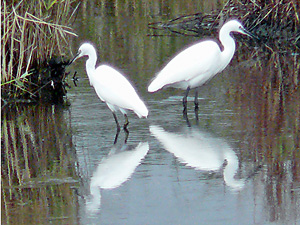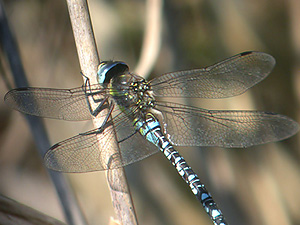|
Our first walk of the new season was on a blustery afternoon that far was more pleasant than the very wet morning we had just endured.
We were still in the car park when the first waders appeared - a group of Black-tailed Godwits that flew over our heads presumably on their way to Radipole. Luckily some of them turned back and we had good views of them sleeping at the water's edge. A Sandwich Tern was also here but flew off before we had chance to have a look at it. |
|
© David Gawler
Little Egrets |
A little further on were several vantage points from which we could search the marshes for birds. Little Egrets were everywhere some happy to give us very close views. Ducks here were mainly Teal with a few Shovelers hiding in the reeds. Most of the migrants were Pied Wagtails which were feeding in large numbers on the marsh. The best bird here however was a young Yellow-legged Gull (the Mediterranean version of our Herring Gull) which flew past at some height, not really allowing us to see it properly at all. |
| We were accompanied all the time by Migrant Hawker dragonflies, with one Common Darter and a couiple of Red Admirals making up the rest of the insects seen. Holes made by Water Voles were evident in the sides of the banks but we couldn't tell if they were still occupied. |
© Bob Ford/Nature Portfolio
Migrant Hawker |
|
Walking on through the reedbeds to the northern side of the reserve we had a brief view of a Bearded Tit as it flew off over the reeds.
Plenty of ducks here, largely Gadwall with a few Shoveler.
One or two Cetti's Warblers were heard singing, but there were definitely fewer about than last year.
The last leg produced an unusually good view of a Little Grebe, but suprisingly no Ruddy Ducks. It seems these are all at Radipole at the moment. The Lapwings out on one of the tern islands looked very attractive through the telescope. The flock of Canada Geese contained a single Barnacle Goose, a species previously dismissed by birdwatchers as merely "an escape" but of more interest since it was admitted to category C of the British List (for feral-breeding birds). One of the last birds we watched was a gorgeous male Kestrel, perched on a bush out in the middle of the reserve. |
|